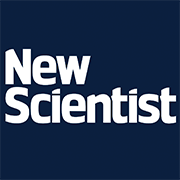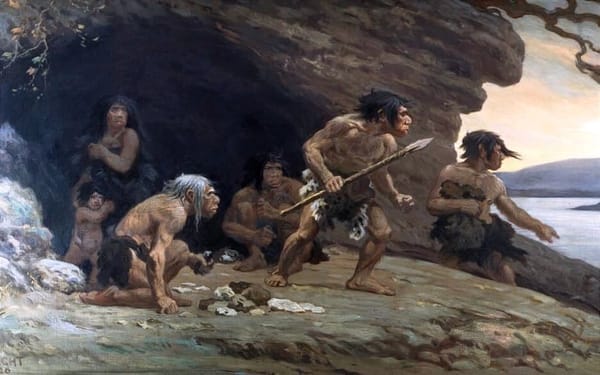Paper Roundup August 2025: Alpha Centauri Ab, Worm Circuits, AI Chess
Every month, I publish a curated list of scholarship on "big questions" in science — the stuff you'd find sitting on the desk of an old timey natural philosopher whisked to the present.

How did life begin? What is emergence? Are we alone? Every month, I publish a curated list of the most fascinating, groundbreaking, inflammatory, or otherwise bold new scholarship on "big questions" in science. I like to imagine these are the papers you'd find sitting on the desk of an old timey natural philosopher who'd been whisked to the present.
Send recommendations for next month's roundup to elise@reviewertoo.com. And if this is your kind of weird, why not share it with a friend or post it on Bluesky or wherever else you hang out online?
Don't miss next month's newsletter!
Highlights
A first picture of a habitable-zone (gas) planet in the closest star system to Earth
Worlds Next Door: A Candidate Giant Planet Imaged in the Habitable Zone of α Centauri A. I. Observations, Orbital and Physical Properties, and Exozodi Upper Limits (The Astrophysical Journal Letters, August 11) by Charles Beichman, Aniket Sanghi, Dimitri Mawet, Pierre Kervella, Kevin Wagner, Billy Quarles, Jack J. Lissauer, Max Sommer, Mark Wyatt, Nicolas Godoy, William O. Balmer, Laurent Pueyo, Jorge Llop-Sayson, Jonathan Aguilar, Rachel Akeson, Ruslan Belikov, Anthony Boccaletti, Elodie Choquet, Edward Fomalont, Thomas Henning, Dean Hines, Renyu Hu, Pierre-Olivier Lagage, Jarron Leisenring, James Mang, Michael Ressler, Eugene Serabyn, Pascal Tremblin, Marie Ygouf, and Mantas Zilinskas
Worlds Next Door: A Candidate Giant Planet Imaged in the Habitable Zone of α Cen A. II. Binary Star Modeling, Planet and Exozodi Search, and Sensitivity Analysis (The Astrophysical Journal Letters, August 11) by Aniket Sanghi, Charles Beichman, Dimitri Mawet, William O. Balmer, Nicolas Godoy, Laurent Pueyo, Anthony Boccaletti, Max Sommer, Alexis Bidot, Elodie Choquet, Pierre Kervella, Pierre-Olivier Lagage, Jarron Leisenring, Jorge Llop-Sayson, Michael Ressler, Kevin Wagner, Mark Wyatt
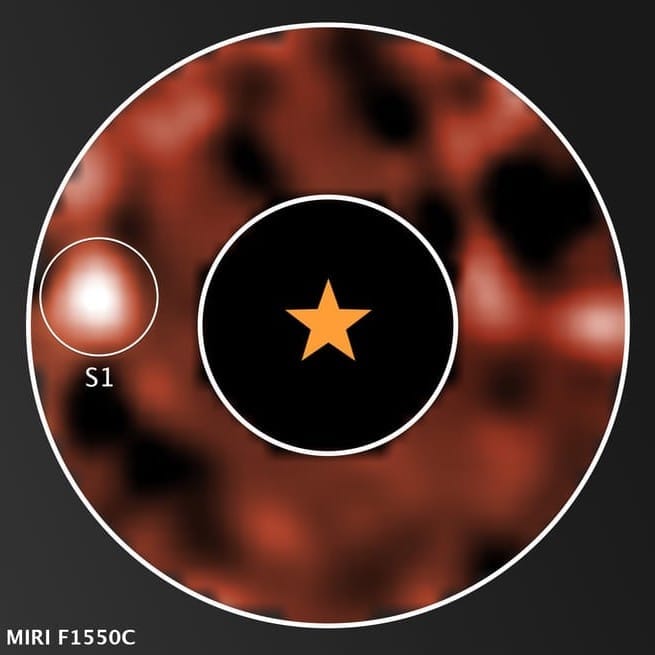
There could be a gas giant in the habitable zone of Alpha Centauri A, the nearest Sun-like star. And scientists may have just taken a picture of it.
This is exciting for a few reasons: 1) directly imaging exoplanets with current technology is very hard so any direct images are exciting and 2) this gas giant, if confirmed, could host moons. There could be an entire system of habitable little worlds spinning away in the solar system next door. I get into more detail about what this detection means — and what it doesn't — in my post all about this planet.
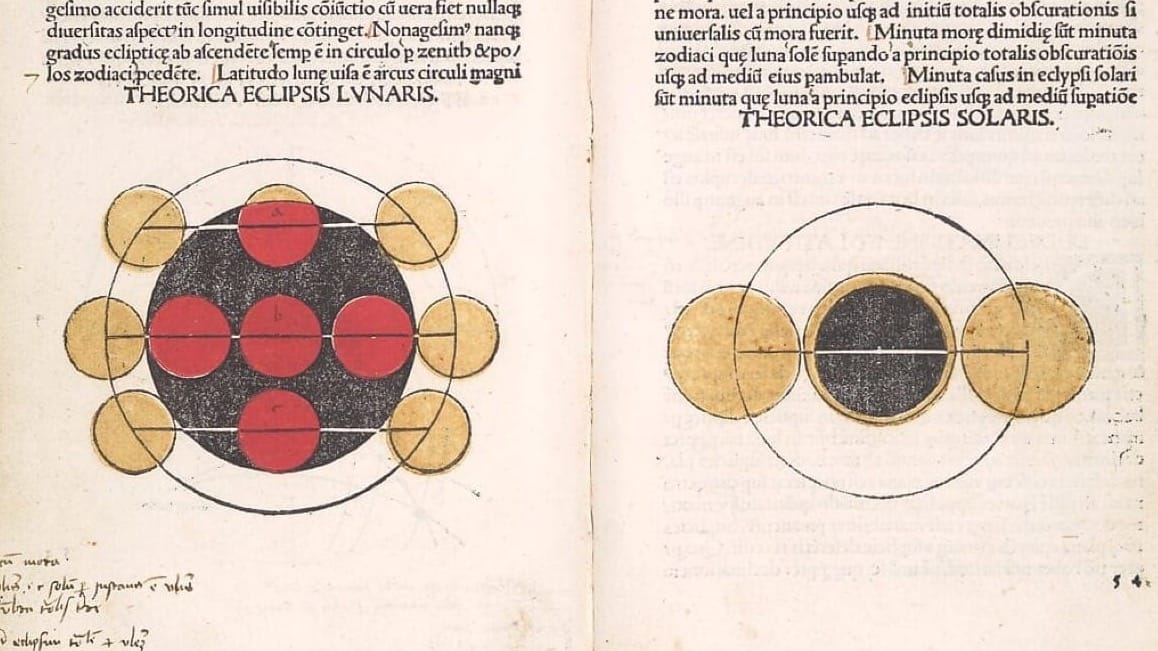
The full circuit diagram of an animal
Whole-body connectome of a segmented annelid larva (eLife, August 27,) by Csaba Verasztó, Sanja Jasek, Martin Gühmann, Luis Alberto Bezares-Calderón, Elizabeth A. Williams, Réza Shahidi, and Gáspár Jékely
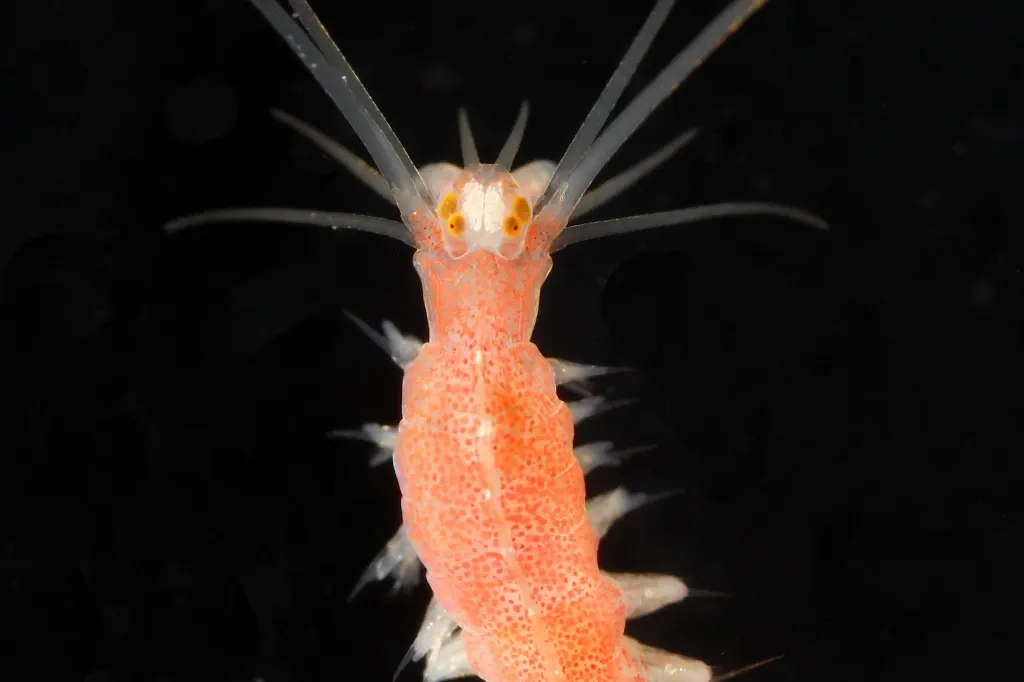
If you want to know how something works, having an accurate diagram is a good place to start. We'd really like to know how the brain works, and ideally how it connects to the body. So having a full diagram of the nervous system would be great. Making one, however, is hard. It has only been done for two species: lab legend C. elegans and a sea squirt larva. C. elegans has less about 1000 cells in total. The sea squirt larva has 301 cells, 117 of which are neurons.
Now, scientists have diagrammed the entire nervous system of the most complex animal yet: the 3 day old larva of a weirdly cute marine worm called Platynereis dumerilii. It contains about 900 cells and nearly 1000 neurons. Mapping and characterizing them all took scientists about 10 years.
For a scientist's perspective on why the circuit of this specific worm matters, see this commentary by Alex Winsor and Paul Katz. I'm excited about this for a less sophisticated reason: I'm just a fan of P. dumerilii. The worms' gruesome reproductive cycle is synced to the moon and it is the best established lab critter for studying life's lunar clock. Fertile adults metamorphose into muscular sacs of sperm and eggs, throwing out unnecessary extras like the digestive tract to make more room, and then explode — hopefully in company, or else the whole transformation, called epitoky, is for nothing.
I had trouble confirming whether P. dumerilii explodes this fantastically, but Kristin Tessmar-Raible, who studies these worms, told me in an interview that they essentially swim around so fast that they "basically burst open."
Obviously, you can only explode in a cloud of gametes once in a lifetime. So the worms use a lunar calendar to coordinate their final "nuptial dance." We know far less about the biological details of circalunar rhythm than those of the circadian clock, which scientists worked out in great detail by studying fruit flies. But the sun isn't the whole story. Plenty of sea creatures clearly keep time to the moon — and humans have our own monthly cycles, even if males of our species are mostly circadian creatures. Evolution is nothing if not resourceful. So could the menstrual cycle have been cobbled together from bits of old cellular clockwork that our sea-dwelling ancestors used to keep time to the moon? Kristin Tessmar-Raible at the University of Vienna, one of the scientists pioneering P. dumerilii as a model organism, told me in an interview for Quanta that this might be exactly what happened.
Now, as only the 3rd species to have its neural circuits fully mapped, P. dumerilii could be on its way to becoming a "model" organism.

A brain on a brainy chip
Neuromorphic Simulation of Drosophila Melanogaster Brain Connectome on Loihi 2 (arXiv preprint, August 22) by Felix Wang, Bradley H. Theilman, Fred Rothganger, William Severa, Craig M. Vineyard, and James B. Aimone
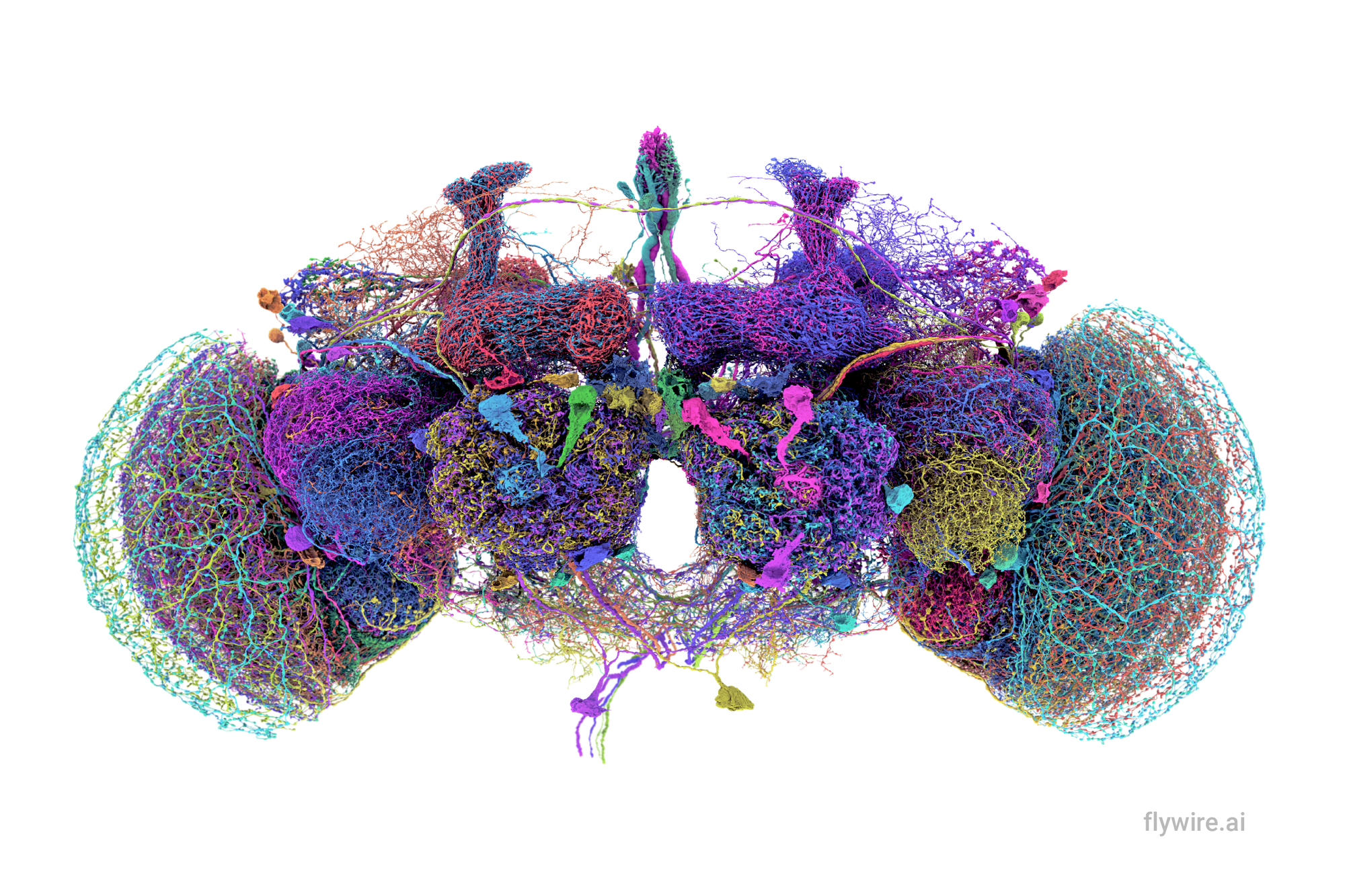
Speaking of wiring diagrams, it'd sure be great to be able to simulate them on computers. That'd obviously make it easier to test neuroscience hypotheses without needing to meddle with organisms, but it could also open up new ways to build AI that's more like real-I. Simulating activity on invertebrate connectomes is becoming feasible, but doing this for even pared-down models of a human brain is beyond the capabilities of all but the most powerful computers. Some scientists think a solution could be to develop chips built like brains — neuromorphic hardware. In this preprint, scientists at the Sandia National Lab simulated a "biologically realistic" connectome on neuromorphic chips for the first time, achieving speeds order of magnitude faster than on conventional computers.
AI chess players keep opponents in suspense
AI sustains higher strategic tension than humans in chess (arXiv preprint, August 16) by Adamo Cerioli, Edward D. Lee, and Vito D. P. Servedio
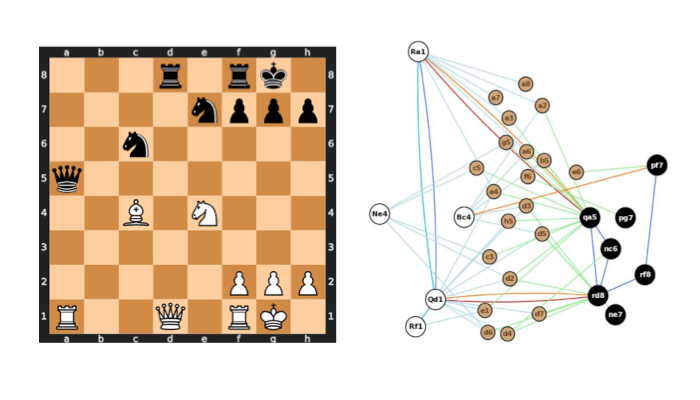
At a certain point, strategy requires commitment. Some strategies are mutually exclusive and picking one means abandoning others. But up until that point, it can pay off to keep your options open and keep your opponent in suspense.
An analysis of highly competitive AI chess players found that the bots maintain "strategic tension" for longer than their human counterparts. AIs had more tolerance for complicated positions on the board and balance between offensive and defensive tactics, and maintained that tolerance for longer. Humans winnowed down their strategic options faster. Chess is just a game. But this finding raises the perhaps disturbing possibility that we've already created machines capable of outfoxing us in complicated, shifting strategic environments that favor adaptability — and arguably, that's our niche. Are we intentionally engineering players that beat us at our own game?
Hunting for exoplanets on the dark side of the moon
Identifying Habitable Exoplanets with Radio Telescopes on the Lunar Farside (arXiv preprint, August 19) by N. Mahesh, J. D. Bowman, J. O. Burns, S. D. Bale, T.-C. Chang, S. Furlanetto, G. Hallinan, A. Hegedus, J. Mirocha, J. Pober, R. Polidan, D. Rapetti, N. Thyagarajan, and J. Turner
The "dark side of the moon" isn't really dark — it experiences day and night just like the moon's familiar face. But because is the one place int the solar system that's consistently shaded from our radio chatter and astronomers have thrown around the idea of building a radio telescope below the lunar farside's radio "dark sky for decades. This preprint suggests that proposed telescope concepts could detect planetary magnetic fields around rocky, Earth-like worlds. It's widely believed that terrestrial planets can't hold onto substantial atmospheres — and therefore can't be habitable — without a magnetic field, even though the science on how and why planets keep their atmospheres isn't that clear. But whether or not you think magnetospheres are necessary for habitability, detecting them in other systems would be very helpful for understanding how and why they form and what influence they do (or don't) have on atmospheres.
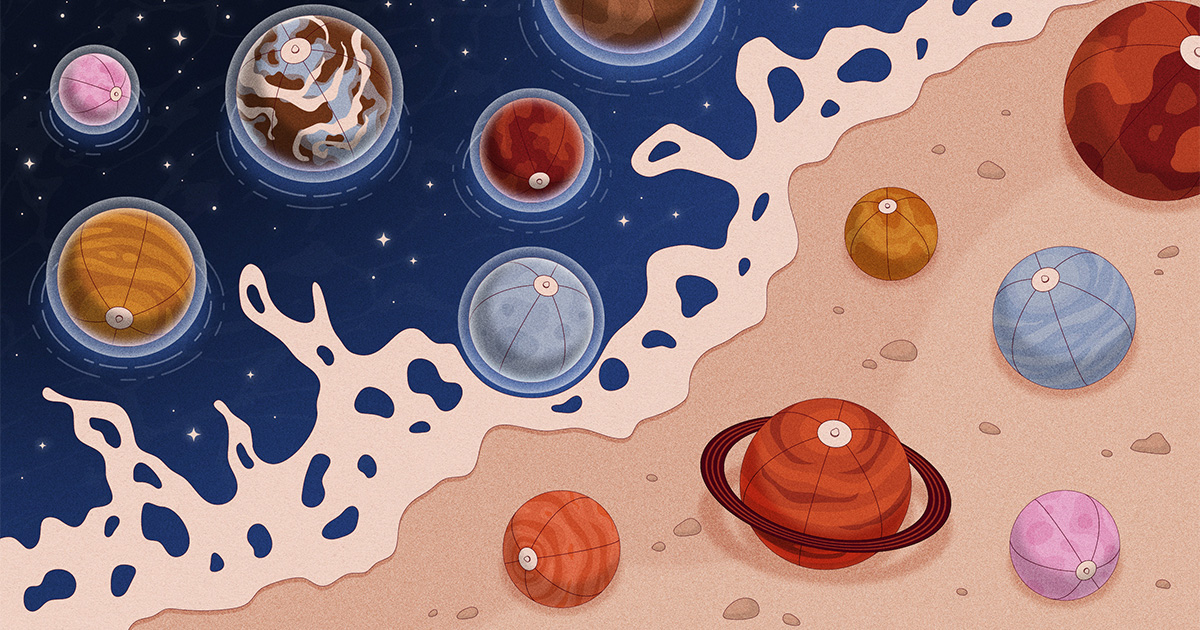
Special issue: life and planets
Chance and purpose in the evolution of biospheres, introduction to a special issue of Philosophical Transactions of the Royal Society B (August 7) by Philip C. J. Donoghue, Timothy M. Lenton, Samir Okasha, Graham A. Shields, and Anja Spang

Earth history, planetary science, and geobiology enthusiasts, this is for you: a whole special issue of Philosophical Transactions of the Royal Society B dedicated to the co-evolution of metabolism and the planet. If you check out nothing else, take a peek at W. Ford Doolittle's essay "Darwinizing Gaia." Whether you agree or disagree with him, it's a great introduction to James Lovelock and Lynn Margulis' controversial Gaia Hypothesis, which proposes that the Earth is a single organism. There are several articles of interest to exoplanet astrobiologists as well.
A massive effort to map how mouse brains decide
A brain-wide map of neural activity during complex behaviour (Nature, September 3) by International Brain Laboratory, Dora Angelaki, Brandon Benson, Julius Benson, Daniel Birman, Niccolò Bonacchi, Kcénia Bougrova, Sebastian A. Bruijns, Matteo Carandini, Joana A. Catarino, Gaelle A. Chapuis, Anne K. Churchland, Yang Dan, Felicia Davatolhagh, Peter Dayan, Eric EJ DeWitt, Tatiana A. Engel, Michele Fabbri, Mayo Faulkner, Ila Rani Fiete, Charles Findling, Laura Freitas-Silva, Berk Gerçek, Kenneth D. Harris, Michael Häusser, Sonja B. Hofer, Fei Hu, Félix Hubert, Julia M. Huntenburg, Anup Khanal, Christopher S. Krasniak, Christopher Langdon, Christopher Langfield, Petrina Y. P. Lau, Zachary F. Mainen, Guido T. Meijer, Nathaniel J. Miska, Thomas D. Mrsic-Flogel, Jean-Paul Noel, Kai Nylund, Alejandro Pan-Vazquez, Liam Paninski, Alexandre Pouget, Cyrille Rossant, Noam Roth, Rylan Schaeffer, Michael Schartner, Yanliang Shi, Karolina Z. Socha, Nicholas A. Steinmetz, Karel Svoboda, Anne E. Urai, Miles J. Wells, Steven J. West, Matthew R. Whiteway, Olivier Winter, and Ilana B. Witten
What's going on the brain during decision-making? To help find out, a massive scientific collaboration has produced a map of neuron activity in the mouse brain during decision-making. Researchers working in about a dozen labs compiled measurements of 620,000 individual neurons across 139 different mice taken during a standard set of complicated tasks. This is a significant step, because historically it has been very hard to compare results across groups using different recording methods and experimental setups. For a first result, see this paper in the same issue: Brain-wide representations of prior information in mouse decision-making.
I happened to write a story about work on food poisoning and aversive learning by the new study's last author Ilana Witten earlier this year. Rodents typically aren't great at associating a cause with a delayed effect. Food poisoning is an exception: make a mouse sick after giving it an unfamiliar meal, even hours later, and it'll still learn to avoid that food in the future. Understanding how aversive learning works and breaks might help demystify disorders like ARFID (too much aversion) and addictions (too little aversion).
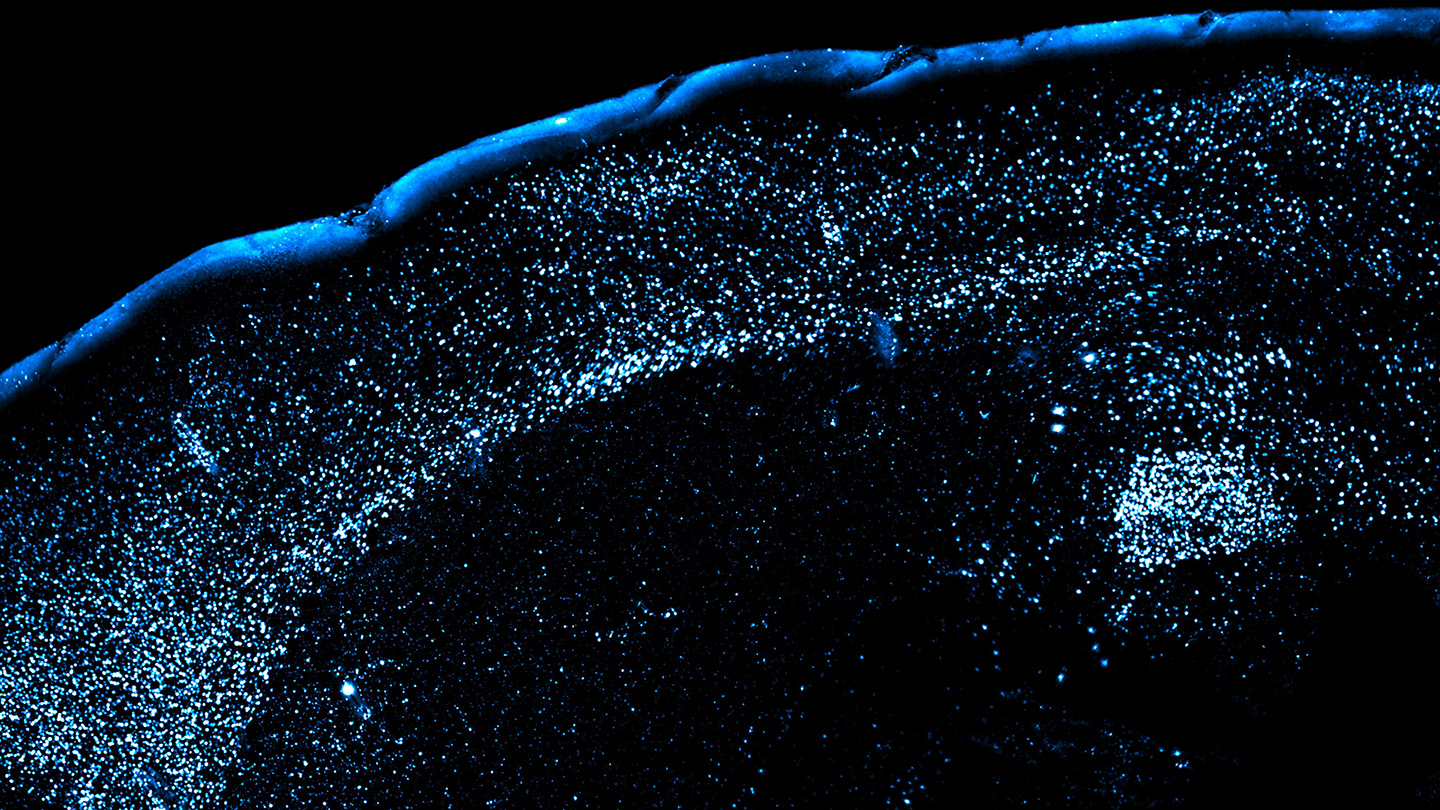
Cicad-ian rhythm
Photometric decision making during the dawn choruses of cicadas (August 1, Physical Review E) by Rakesh Khanna A., Raymond E. Goldstein, Adriana I. Pesci, and Nir S. Gov
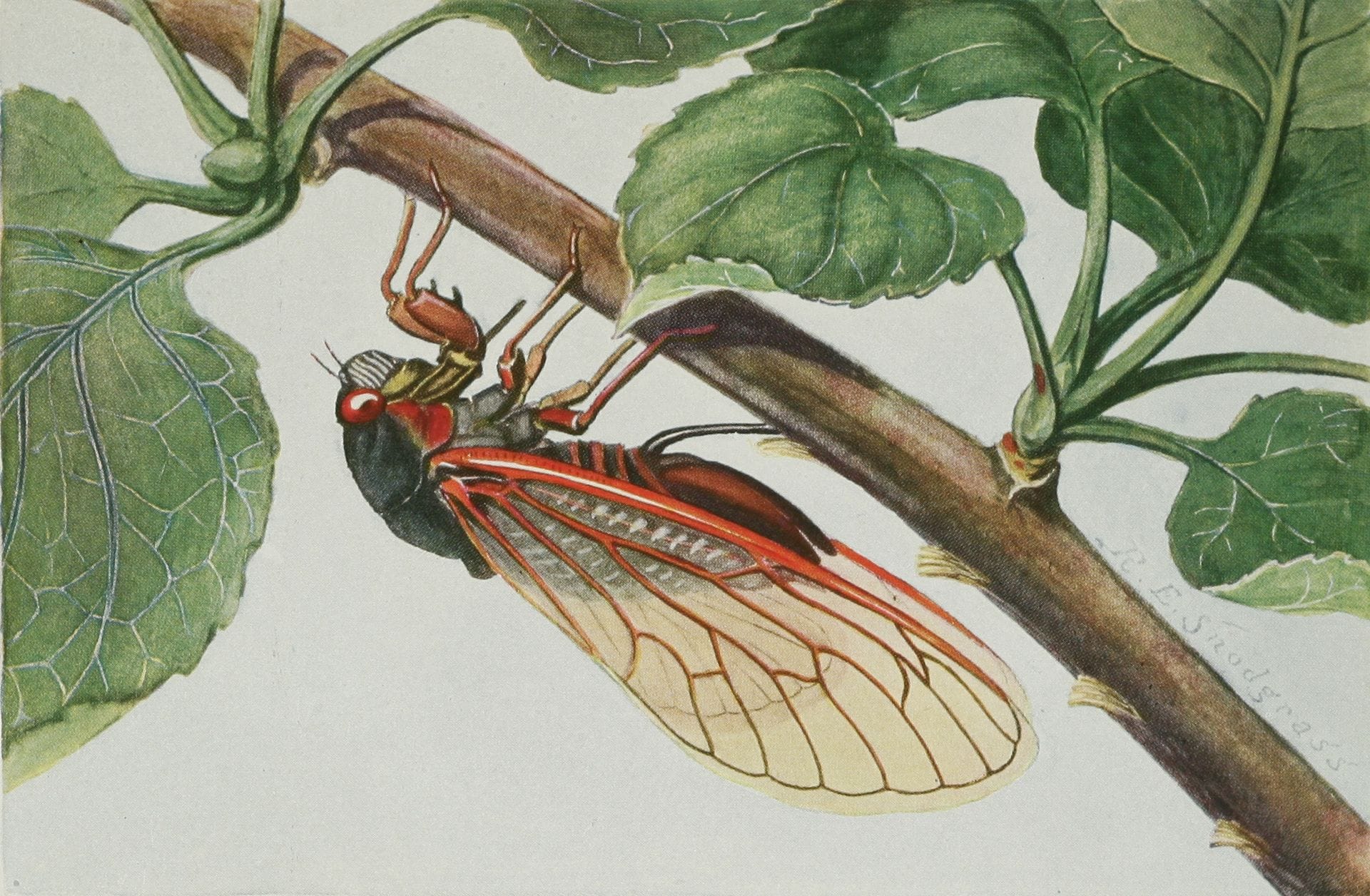
The sunrise doesn't happen all at once. It gets lighter and lighter, bit by bit. But still, somehow, cicadas all start screaming all at once, all together, sometime before dawn. They're not the only species that sings on a schedule: many birds, which I like quite a lot more than bugs, do as well. But how do you schedule a "dawn chorus" without a clock? In this study, researchers try to explain how a gradual ramp-up in sunlight produces the sudden, coordinated onset of cicada screeching. I love studies like this: nerdy, detailed examinations of everyday things like bug screeching, which only seem simple until you take a closer look.
Don't miss the next paper roundup! Subscribe to R2 to stay on top of the biggest ideas in astrobiology, origins of life, and complexity science.
The Rest
Astrobiology
- Warm, water-depleted rocky exoplanets with surface ionic liquids: A proposed class for planetary habitability (PNAS, August 11) by Rachana Agrawal, Sara Seager, Iaroslav Iakubivskyi, Weston P. Buchanan, Ana Glidden, Maxwell D. Seager, William Bains, Jingcheng Huang, and Janusz J. Petkowski
- Strict limits on potential secondary atmospheres on the temperate rocky exo-Earth TRAPPIST-1 d (arXiv preprint, August 11) by Caroline Piaulet-Ghorayeb, Björn Benneke, Martin Turbet, Keavin Moore, Pierre-Alexis Roy, Olivia Lim, René Doyon, Thomas J. Fauchez, Loïc Albert, Michael Radica, Louis-Philippe Coulombe, David Lafrenière, Nicolas B. Cowan, Danika Belzile, Kamrul Musfirat, Mehramat Kaur, Alexandrine L'Heureux, Doug Johnstone, Ryan J. MacDonald, Romain Allart, Lisa Dang, Lisa Kaltenegger, Stefan Pelletier, Jason F. Rowe, Jake Taylor, and Jake D. Turner
- K2-18b Does Not Meet The Standards of Evidence For Life (arXiv preprint, August 8) by Kevin B. Stevenson, Jacob Lustig-Yaeger, E. M. May, Ravi K. Kopparapu, Thomas J. Fauchez, Jacob Haqq-Misra, Mary Anne Limbach, Edward W. Schwieterman, Kristin S. Sotzen, and Shang-Min Tsai
- The Role of Tectonic Luck in Long-Term Habitability of Abiotic Earth-like Planets (July 30, arXiv preprint) by Brandon Park Coy, Edwin S. Kite, R.J. Graham
- Astrobiology and the Transformation of Scientific Epistemology (July 30, PhilPapers preprint) by Kristina Šekrst
Earth
- A prudent planetary limit for geologic carbon storage (Nature, September 3) by Matthew J. Gidden, Siddharth Joshi, John J. Armitage, Alina-Berenice Christ, Miranda Boettcher, Elina Brutschin, Alexandre C. Köberle, Keywan Riahi, Hans Joachim Schellnhuber, Carl-Friedrich Schleussner, and Joeri Rogelj
- News story: Earth’s capacity to store carbon could max out surprisingly soon by Mohana Basu
- Two-billion-year transitional oxygenation of the Earth’s surface (Nature, August 27) by Haiyang Wang, Chao Li, Yongbo Peng, Junpeng Zhang, Meng Cheng, Xiaobin Cao, Wenkun Qie, Zihu Zhang, Matthew S. Dodd, Mingcai Hou, Malcolm Wallace, Ashleigh v. S. Hood, Timothy W. Lyons and Huiming Bao
- The geologic history of marine dissolved organic carbon from iron oxides (April 13, Nature) by Nir Galili, Stefano M. Bernasconi, Alon Nissan, Uria Alcolombri, Giorgia Aquila, Marcella Di Bella, Thomas M. Blattmann, Negar Haghipour, Francesco Italiano, Madalina Jaggi, Ifat Kaplan-Ashiri, Kang Soo Lee, Maxwell A. Lechte, Cara Magnabosco, Susannah M. Porter, Maxim Rudmin, Robert G. M. Spencer, Roman Stocker, Zhe Wang, Stephan Wohlwend, and Jordon D. Hemingway
Origins and nature of life
- Implementing Darwinian Evolution Using Synthetic Self-Replicators (University of Groningen PhD thesis, September 5) by Juntian Wu
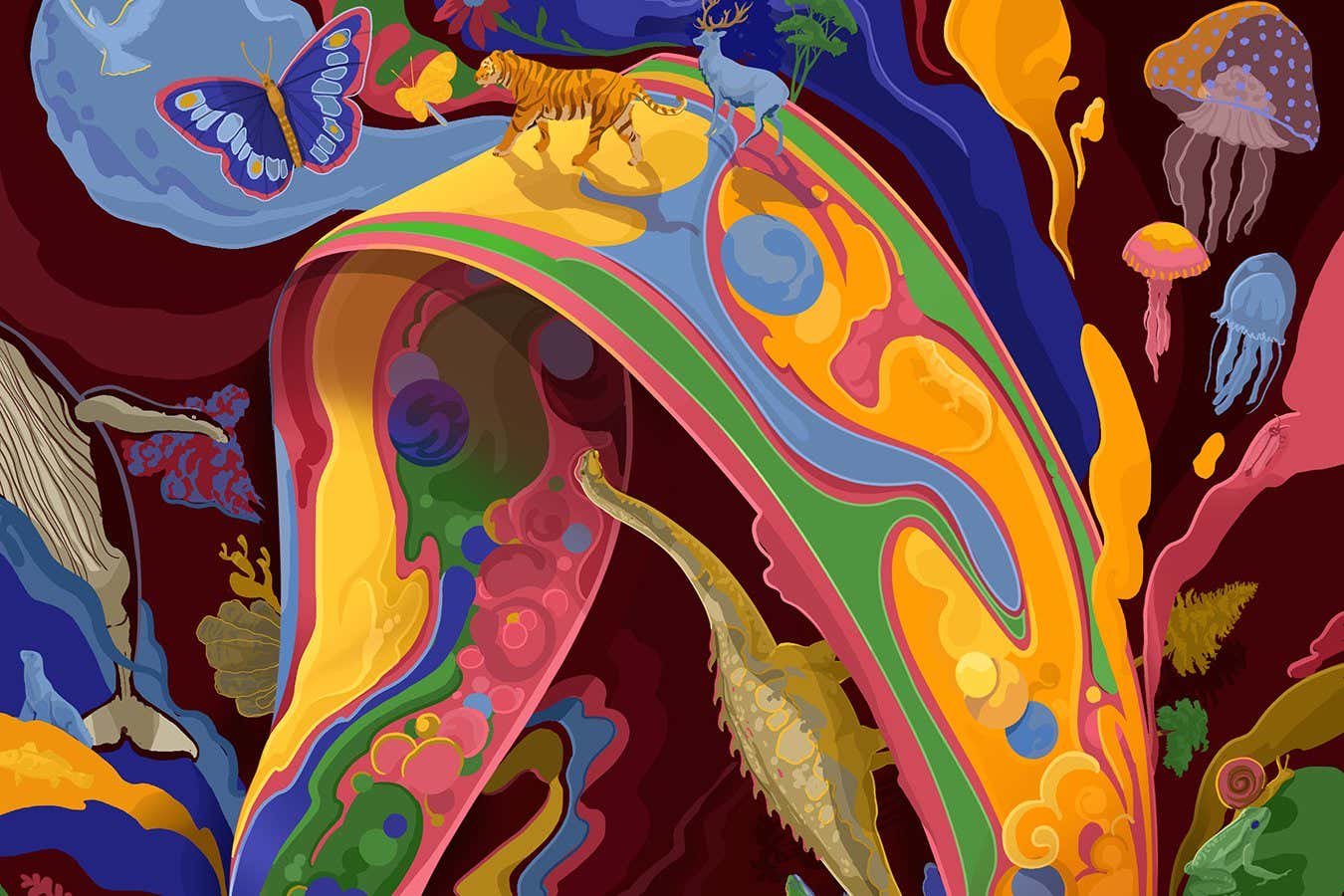
If you're interested in synthetic replicators and evolution without life, check out my feature in New Scientist on the work being led by Wu's thesis advisor Sijbren Otto: Can a strange state of matter explain what life is – and how it began?
- Physics of Life: Exploring Information as a Distinctive Feature of Living Systems (PRX Life, September 3) by Stuart Bartlett, Andrew W. Eckford, Matthew Egbert, Manasvi Lingam, Artemy Kolchinsky, Adam Frank, and Gourab Ghoshal
- From Polymerization-Enabled Folding and Assembly to Chemical Evolution: Key Processes for Emergence of Functional Polymers in the Origin of Life (Astrobiology, August 22) by Rotem Edri, Manesh Prakash Joshi, Moran Frenkel-Pinter, Nicholas V. Hud, Christine D. Keating, and Luke J. Leman
- Origins of Life: The Possible and the Actual (August 20, Preprints.org preprint) by Ricard Sole, Chris Kempes, and Susan Stepney
- Life's homochirality: Across a prebiotic network (PNAS, August 19, 2025) by S. Furkan Ozturk and Dimitar D. Sasselov
- A niche construction-based perspective on chemical evolution before replication and reproduction (August 1, bioRxiv preprint) François Papale, Kulish Yuri, Joseph P. Bielawski, and Louis-Patrick Haraoui
Evolution and function in biology
- Noise equals control (Physical Review E, August 29) by Eric De Giuli
- Beyond the Second Law: Darwinian Evolution as a Tendency for Entropy Production to Increase (Entropy, August 11) by Charles H. Lineweaver
- Top-Down Coercive Mechanisms and the Major Transitions in Evolution (August 8, BioEssays) by Javier Suárez, Adrian Stencel, and Isobel Ronai
- Modelling the emergence of open-ended technological evolution (August 6, arXiv preprint) by James Winters, Mathieu Charbonneau
- Continual Evolution in Nonreciprocal Ecological Models (August 4, PRX Life) by Aditya Mahadevan and Daniel S. Fisher
- Innovation-exnovation dynamics on trees and trusses (31 July in Physical Review Research) by Edward D. Lee and Ernesto Ortega-Díaz
- Evolutionary features in a minimal physical system: Diversity, selection, growth, inheritance, and adaptation (July 30, PNAS) by Guy Bunin and Olivier Rivoire
Physical biology and biophysics
- Patterned invagination prevents mechanical instability during gastrulation (Nature, September 3) by Bruno C. Vellutini, Marina B. Cuenca, Abhijeet Krishna, Alicja Szałapak, Carl D. Modes, and Pavel Tomancak
- Divergent evolutionary strategies pre-empt tissue collision in gastrulation (Nature, September 3) by Bipasha Dey, Verena Kaul, Girish Kale, Maily Scorcelletti, Michiko Takeda, Yu-Chiun Wang, and Steffen Lemke
- The actin cortex acts as a mechanical memory of morphology in confined migrating cells (Nature Physics, August 25) by Yohalie Kalukula, Marine Luciano, Gleb Simanov, Guillaume Charras, David B. Brückner and Sylvain Gabriele
- Self-generated chemotaxis of mixed cell populations (PNAS, August 21) by Mehmet Can Uçar, Zane Alsberga, Jonna Alanko, Michael Sixt, and Edouard Hannezo
- A fluorescent-protein spin qubit (Nature, August 20) by Jacob S. Feder, Benjamin S. Soloway, Shreya Verma, Zhi Z. Geng, Shihao Wang, Bethel B. Kifle, Emmeline G. Riendeau, Yeghishe Tsaturyan, Leah R. Weiss, Mouzhe Xie, Jun Huang, Aaron Esser-Kahn, Laura Gagliardi, David D. Awschalom, and Peter C. Maurer
Physics
- Directly observing replica symmetry breaking in a vector quantum-optical spin glass (August 14, Science) by Ronen M. Kroeze, Brendan P. Marsh, David Atri Schuller, Henry S. Hunt, Alexander N. Bourzutschky, Michael Winer, Sarang Gopalakrishnan, Jonathan Keeling, and Benjamin L. Lev
- Unveiling the Electrodynamic Nature of Spacetime Collisions (Physical Review Letters, September 2) by Siddharth Boyeneni, Jiaxi Wu, and Elias R. Most
- Quantum Delocalization of a Levitated Nanoparticle (Physical Review Letters, August 19) by M. Rossi, A. Militaru, N. Carlon Zambon, A. Riera-Campeny, O. Romero-Isart, M. Frimmer, and L. Novotny
- Summary in Physics: Unleashing the Quantumness of a Nanoparticle by Michael Schirber
- Emergent Self-Propulsion of Skyrmionic Matter in Synthetic Antiferromagnets (Physical Review Letters, August 18) by Clécio C. de Souza Silva, Matheus V. Correia, and J. C. Piña Velásquez
- Viewpoint in Physics: Skyrmions as Active Matter by Xichao Zhang and Masahito Mochizuki
- Gambling Carnot Engine (Physical Review Letters, August 4) by Tarek Tohme, Valentina Bedoya, Costantino di Bello, Léa Bresque, Gonzalo Manzano, and Édgar Roldán
Emergence
- Emergence: from physics to biology, sociology, and computer science (arXiv preprint, August 12) by Ross H. McKenzie
- Information dynamics and the emergence of high-order individuality in ecosystems (Communications Biology, August 15) by Hardik Rajpal, Clem von Stengel, Pedro A. M. Mediano, Fernando E. Rosas, Eduardo Viegas, Pablo A. Marquet, and Henrik J. Jensen
- Emergence of Brains (August 7, PRX Life) by William Bialek
- Consilience in Causation: Causal Emergence Is Found Across Measures of Causation (August 4, Entropy) by Renzo Comolatti and Erik Hoel
Networks
- Higher-order Ising model on hypergraphs (Physical Review E, August 25) by Thomas Robiglio, Leonardo Di Gaetano, Ada Altieri, Giovanni Petri, and Federico Battiston
- Core-Periphery Detection in Multilayer Networks (Physical Review Letters, August 22) by Kai Bergermann and Francesco Tudisco
- Functional mesoscale organization of complex networks (August 6, arXiv preprint) by Arsham Ghavasieh, Satyaki Sikdar, Manlio De Domenico, Santo Fortunato
Society
- Profitable third-party punishment destabilizes cooperation (PNAS, August 19) by Raihan Alam and Tage S. Rai
- A stochastic theory of urban metabolism (PNAS, August 11) by Martin Hendrick, Andrea Rinaldo, and Gabriele Manoli
- Scaling laws of political regime dynamics: stability of democracies and autocracies in the twentieth century (August 6, Royal Society Open Science) by Paula Pirker-Díaz, Matthew C. Wilson, Sönke Beier, and Karoline Wiesner
- The evolution of zero-sum and positive-sum worldviews (August 5, PNAS) by Sergey Gavrilets and Paul Seabright
- Collective contributions to polarization in political voting (August 4, arXiv preprint) by Gavin Rees and Edward D. Lee
The Brain
- Rate and noise in human amygdala drive increased exploration in aversive learning (Nature, August 27) by Tamar Reitich-Stolero, Kristoffer C. Aberg, Dean Halperin, Carmel Ariel, Genela Morris, Lilach Goldstein, Firas Fahoum, Ido Strauss, and Rony Paz
- Hippocampal mismatch signals are based on episodic memories and not schematic knowledge (PNAS, August 22)by Dominika K. Varga, Petar P. Raykov, Elizabeth Jefferies, Aya Ben-Yakov, and Chris M. Bird
- Stable cortical body maps before and after arm amputation (Nature Neuroscience, August 21) by Hunter R. Schone, Roni O. Maimon-Mor, Mathew Kollamkulam, Malgorzata A. Szymanska, Craig Gerrand, Alexander Woollard, Norbert V. Kang, Chris I. Baker, and Tamar R. Makin
- Associated Briefing: The brain’s body map does not forget lost limbs
- Action-type mapping principles extend beyond evolutionarily conserved actions, even in people born without hands (PNAS, August 19) by Florencia Martinez-Addiego, Yuqi Liu, Kyungji Moon, Elizabeth Shytle, Lénia Amaral, Caroline O'Brien, Sriparna Sen, Maximilian Riesenhuber, Jody C. Culham, and Ella Striem-Amit
- Cognitive bridge between geometric and numerical learning in monkeys (August 18, PNAS) by Jessica F. Cantlon, Logan R. Brownell, Jialin Li, and Caroline M. DeLong
- Pathfinding: a neurodynamical account of intuition (Communications Biology, August 13) by Steven Kotler, Michael Mannino, Karl Friston, György Buzsáki, J. A. Scott Kelso, and Guillaume Dumas
- What people learn from punishment: A cognitive model (August 4, PNAS) by Setayesh Radkani, Joshua B. Tenenbaum, and Rebecca Saxe
- Neural and computational evidence for a predictive learning account of the testing effect (August 8, PNAS) by Haopeng Chen, Pieter Verbeke, Stefania Mattioni, Cristian Buc Calderon, and Tom Verguts
- Reinstating memories’ temporal context at encoding causes Sisyphus-like memory rejuvenation (July 28, PNAS) byKarl-Heinz T. Bäuml, Sarah R. Meixensperger, and Marilena L. Hirsch
Language
- Subword symmetry in natural languages (Royal Society Open Science, August 21) by Olga Pelloni, Rob van der Goot, Peter Ranacher, Ivan Vulic, and Tanja Samardzic
- Efficient neural encoding as revealed by bilingualism (PNAS, August 19) by Charlotte Moore, Peter W. Donhauser, Denise Klein, and Krista Byers-Heinlein
Consciousness
- Consciousness needs a subject (August 21, PsyArXiv preprint) by Kevin Michell and Carolyn Dicey Jennings
- Compatibilist emergence for the science of consciousness (PsyArXiv Preprints, August 19) by George Blackburne, Alberto Liardi, Jeremy I. Skipper, Pedro A. M. Mediano, and Fernando Rosas
- The Criticality of Consciousness: Excitatory–Inhibitory Balance and Dual Memory Systems in Active Inference (August 4, Entropy) by Don M. Tucker, Phan Luu, and Karl Friston
- On the utility of toy models for theories of consciousness (arXiv preprint, July 31) by Larissa Albantakis
Artificial Intelligence
- Supervised learning in DNA neural networks (Nature, September 3) by Kevin M. Cherry and Lulu Qian
- Analog optical computer for AI inference and combinatorial optimization (Nature, September 3) by Kirill P. Kalinin, Jannes Gladrow, Jiaqi Chu, James H. Clegg, Daniel Cletheroe, Douglas J. Kelly, Babak Rahmani, Grace Brennan, Burcu Canakci, Fabian Falck, Michael Hansen, Jim Kleewein, Heiner Kremer, Greg O'Shea, Lucinda Pickup, Saravan Rajmohan, Ant Rowstron, Victor Ruhle, Lee Braine, Shrirang Khedekar, Natalia G. Berloff, Christos Gkantsidis, Francesca Parmigiani, and Hitesh Ballani
- Optical generative models (Nature, August 27) by Shiqi Chen, Yuhang Li, Yuntian Wang, Hanlong Chen, and Aydogan Ozcan
- Whither symbols in the era of advanced neural networks? (August 7, arXiv preprint) by Thomas L. Griffiths, Brenden M. Lake, R. Thomas McCoy, Ellie Pavlick, Taylor W. Webb
- Artificial intelligence—the death of hypothesis-led research? (QJM: An International Journal of Medicine, August 1) by Stuart D. Rosen and Karl J. Friston
- Closing the box (Cognitive Neuroscience, July 31) by Thomas Parr, Giovanni Pezzulo, and Karl Friston
- AI–AI bias: Large language models favor communications generated by large language models (July 29, PNAS) by Walter Laurito, Benjamin Davis, Peli Grietzer, Tomáš Gavenčiak, Ada Böhm, and Jan Kulveit
Just for Fun
- Did the universe go through a knots phase? Tying Knots in Particle Physics (Physical Review Letters, August 29) by Minoru Eto, Yu Hamada, and Muneto Nitta
- DeathGrowl, DeathShout and FryScream: In vivo insights into irregular voice production as a complex nonlinear system—a case study (August 13, Journal of the Royal Society Interface) by Louisa Traser, Mario Fleischer, Daniel Priegnitz, Fiona Stritt, Marie Köberlein, Jonas Kirsch, Johannes Fischer, Hanspeter Herzel, Dirk Mürbe, Bernhard Richter, and Matthias Echternach
- AI speaks dog (tails): Does the tail show when the nose knows? Artificial intelligence outperforms human experts at predicting detection dogs finding their target through tail kinematics (August 13, Royal Society Open Science) by George Martvel, Giulia Pedretti, Teddy Lazebnik, Anna Zamansky, Yuri Ouchi, Tiago Monteiro, Nareed Farhat, Ilan Shimshoni, Yuval Michaeli, Paola Valsecchi, Nathaniel Hall, Sarah Marshall-Pescini, and Dan Grinstein
- Old dogs learn new (language) tricks: Semantic change in adults is not primarily a generational phenomenon (July 28, PNAS) by Gaurav Kamath, Michelle Yang, Siva Reddy, Morgan Sonderegger, and Dallas Card
- Flowers get married, too: Prevalence of monogamy at the level of flowers in plants (August 4, PNAS) by Kamaljit S. Bawa, Namratha Tiwari, and K. Nagaraju Shivaprakash
Thanks for reading! It's thanks to patrons like you that I can continue writing R2. You can help even more by sharing this post with a friend, leaving a comment, or dropping a tip in my tip jar.





